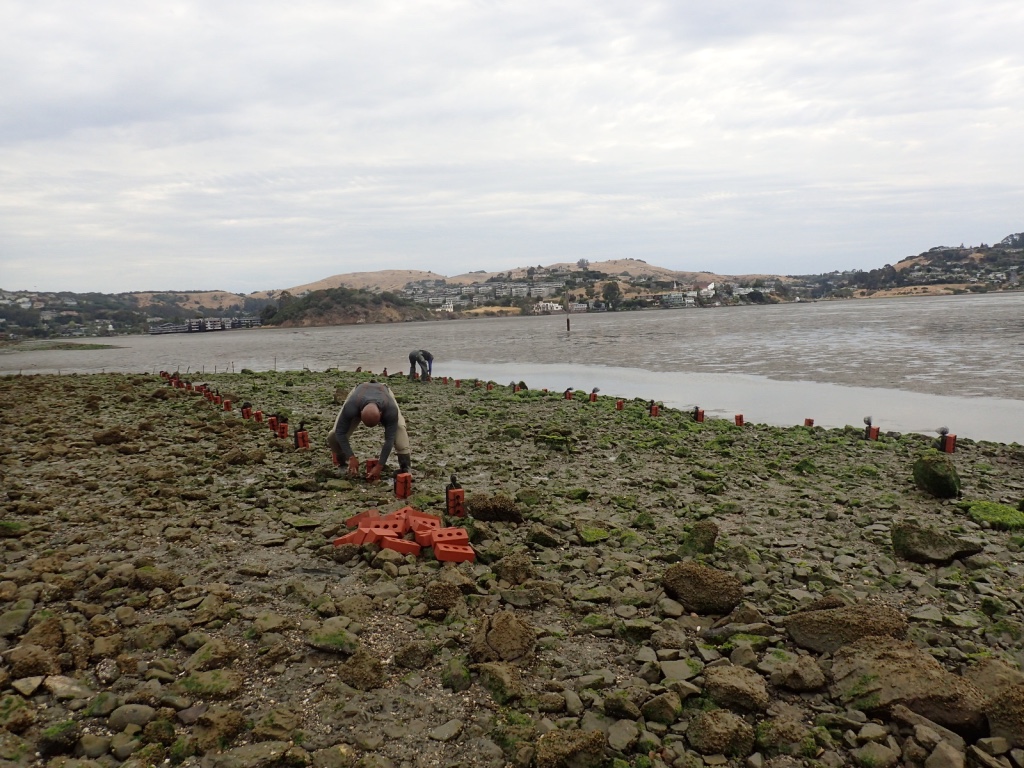Scientific research on Olympia oysters covers a wide range of topics. Although there is a significantly larger body of research focused on the Pacific oyster, Crassostrea gigas, and the eastern oyster, Crassostrea virginica, research on Olympia oysters is increasing and is an important tool to inform conservation and restoration efforts along the West Coast of North America. One way in which researchers can support these efforts is through studying factors that affect population sustainability and recovery. For example, reliable recruitment is a key component of many restoration and enhancement projects; thus, understanding patterns at early life stages (e.g. Carson 2010, Peteiro and Shanks 2015, Wasson et al. 2016) is necessary. Scientists are also researching how environmental conditions vary throughout the Olympia oyster’s diverse range, and how populations are limited by stressors in different bays. Predation is an example of a common stressor (Wasson et al. 2015) that can impact oyster populations (e.g. Buhle and Ruesink 2006, Kimbro et al. 2009, Grason and Buhle 2016), but effects are spatially variable as predators such as oyster drills do not always overlap with oysters. Additionally, the interaction of multiple stressors, particularly under future climate change scenarios, is an active area of research (e.g. Sanford et al. 2014, Bible et al. 2017, Cheng et al. 2016, Chang et al. 2018). Rigorous evaluation of methods for restoration and enhancement (e.g. White et al. 2009, Zacherl et al. 2015, Valdez et al. 2016) is another key area of research, as understanding nuances of successes and failures leads to better efforts in the future. To learn more, a bibliography of selected research on Olympia oysters can be accessed as a PDF, below.


